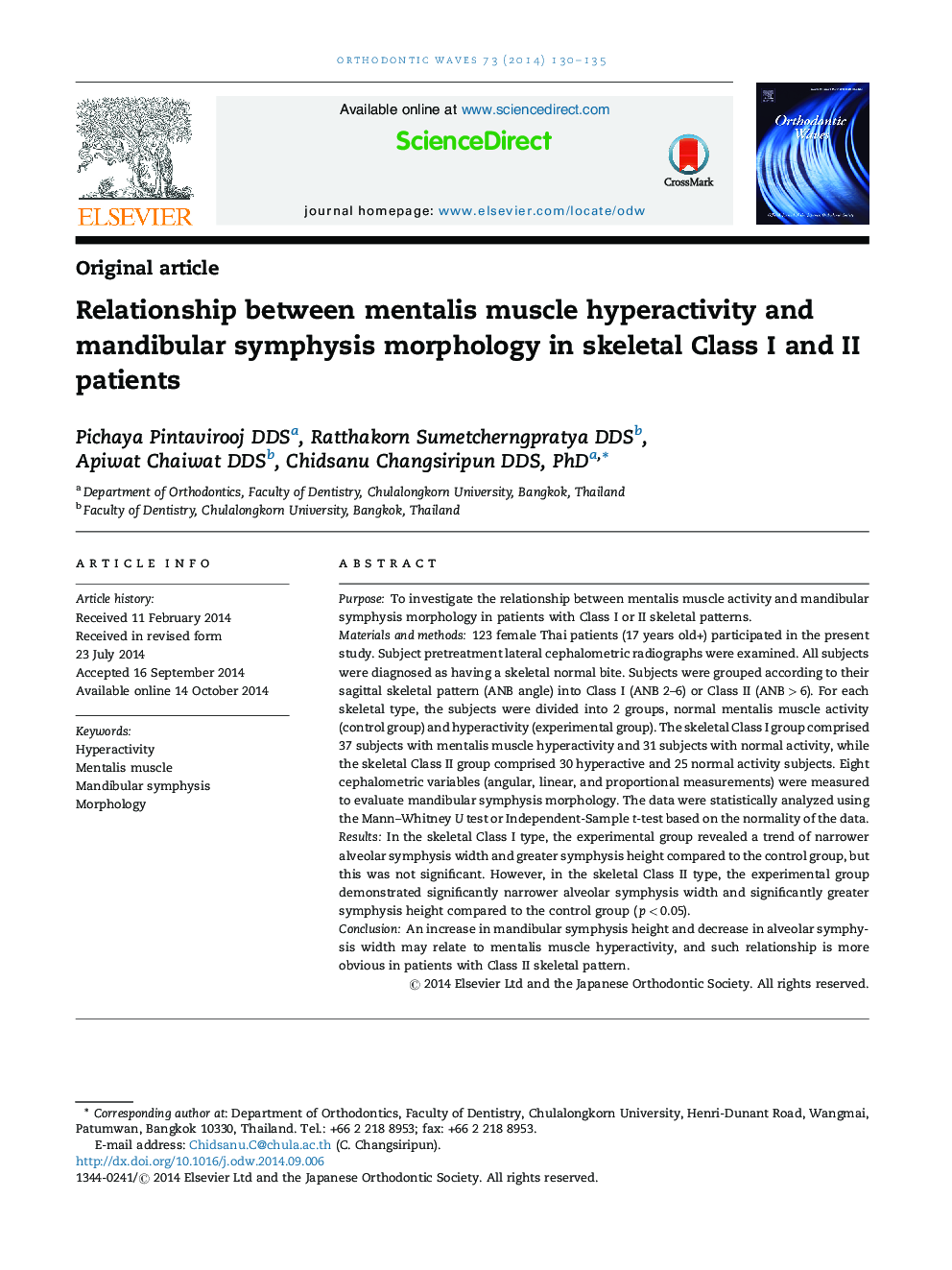| Article ID | Journal | Published Year | Pages | File Type |
|---|---|---|---|---|
| 3170332 | Orthodontic Waves | 2014 | 6 Pages |
PurposeTo investigate the relationship between mentalis muscle activity and mandibular symphysis morphology in patients with Class I or II skeletal patterns.Materials and methods123 female Thai patients (17 years old+) participated in the present study. Subject pretreatment lateral cephalometric radiographs were examined. All subjects were diagnosed as having a skeletal normal bite. Subjects were grouped according to their sagittal skeletal pattern (ANB angle) into Class I (ANB 2–6) or Class II (ANB > 6). For each skeletal type, the subjects were divided into 2 groups, normal mentalis muscle activity (control group) and hyperactivity (experimental group). The skeletal Class I group comprised 37 subjects with mentalis muscle hyperactivity and 31 subjects with normal activity, while the skeletal Class II group comprised 30 hyperactive and 25 normal activity subjects. Eight cephalometric variables (angular, linear, and proportional measurements) were measured to evaluate mandibular symphysis morphology. The data were statistically analyzed using the Mann–Whitney U test or Independent-Sample t-test based on the normality of the data.ResultsIn the skeletal Class I type, the experimental group revealed a trend of narrower alveolar symphysis width and greater symphysis height compared to the control group, but this was not significant. However, in the skeletal Class II type, the experimental group demonstrated significantly narrower alveolar symphysis width and significantly greater symphysis height compared to the control group (p < 0.05).ConclusionAn increase in mandibular symphysis height and decrease in alveolar symphysis width may relate to mentalis muscle hyperactivity, and such relationship is more obvious in patients with Class II skeletal pattern.
